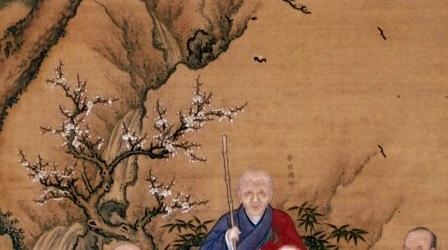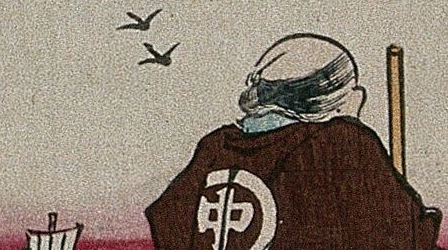Medieval Chinese Buddhism
Subscribe to this topic via: RSS
The history of Buddhism in East Asia.
Caution! Under Construction
Please be aware that this tag is still under construction and as such is missing information and may be changed or removed at any time. For all the content under consideration for this tag, see the “Medieval Chinese Buddhism” folder on Google Drive.
Table of Contents
Books (9)
Readings (41)
Featured:
-
🥇 Best of
… it appears contradictory that Chinese who follow the teachings of Mahāyāna Buddhism have worshipped arhats. […] who was the arhat for Chinese Buddhists?
-
🥇 Best of
Zhu Fonian may have begun to produce new ‘scriptures’ without benefit of any Indian source-texts in an attempt to revive his own flagging fame.
-
⭐ Recommended
While for Huisong, China was indeed a center of Buddhist studies as opposed to the ‘barbaric’ Gaochang, Xuanzang and Puguang most likely regarded China as a Buddhist borderland as opposed to India.
-
Yang Yi’s advocacy of Chan as ‘a separate practice outside the teaching’ in the Chuandeng lu coincided with a literary model that distinguished Song civilization from its predecessors.
-
This study takes as its focus the medieval deification of Prince Shotoku’s mother, Anahobe no Hashihito. Long associated with the Nara nunnery Chuguji, Empress Hashihito was resurrected as patron goddess of the nunnery in the medieval period, when Chuguji was restored and expanded by the nun Shinnyo (1211-?). Images of Empress Hashihito and the Nun Shinnyo take center stage in the literature and art associated with Chuguji. This article argues that medieval Chuguji narratives effectively ignore androcentric Buddhist teachings in favor of popular legends that present Empress Hashihito as a female deity and Shinnyo as a female Buddhist exemplar. That Chuguji materials offer these seemingly positive images of Buddhist women challenges the commonly held scholarly assumption that medieval Japanese women fully internalized the disparaging views of the female body disseminated in Buddhist doctrinal texts.
-
The Pure Land was often very concretely present in the Chinese landscape or made present through ritual practice, but it was not owned by a single religious tradition.
-
This paper introduces and critically discusses the earliest dated biography of an East Asian Buddhist nun that is known to us, and also provides a complete annotated translation of said biography. The text in question is the entombed biography and eulogy of Shi Sengzhi (釋僧芝 d. 516 CE).
-
In this article, after focusing on one particularly radical group, whose beliefs consisted of worshipping one’s own future Buddha (法身) residing within oneself (the Dilun school 地論宗), I show that all three schools born of the northern region—the Huayan (華嚴), Chan (禪) and the Three Stages Movement (三階教)—succeeded the radical group…
32 pages -
In the Northern and Southern Dynasties, there were many types of Buddhist scripture-interpretation literature, including xuányì 玄義, xuánlun 玄論, yìshū 義疏, yìzhāng 義章, etc. These exegetical forms are related to Chinese traditional literary style, but mainly inherit the tradition of Indian Buddhist hermeneutics. In this paper, all such types would be summarized as yì (義, exegesis), lun (論, treatise) and shū (疏, commentaries), which are described as follows…
19 pages -
⭐ Recommended
Argues that the latter part of the Lotus Sutra was composed in Gandhāra based on the description of the stupa in the Stūpasaṃdarśana of its eleventh chapter.
See also:
Audio/Video (7)
Featured:
-
How medieval, Chinese Buddhists took the scholar monks of India as their role model for preserving the Dharma, eventually enabling Chinese Buddhism to flourish in its new context.
1h 11 m -
220–581 C.E. … This so-called “Dark Age” was highly creative. Innovations in warfare, religion, print technology, artistry of all types set the stage for the China to come out of this period. What scholars haven’t pointed out yet is that this period also marked a high point in the diversification of social roles for women. Indeed, the collapse of the classical tradition is what made space for new understandings of gender performance. Women experienced greater freedom of movement and choice with the entrance of Buddhism to the Yellow River Valley.
62 min
See also:

